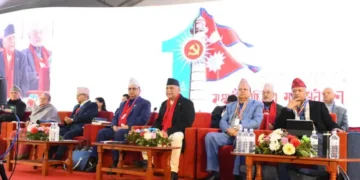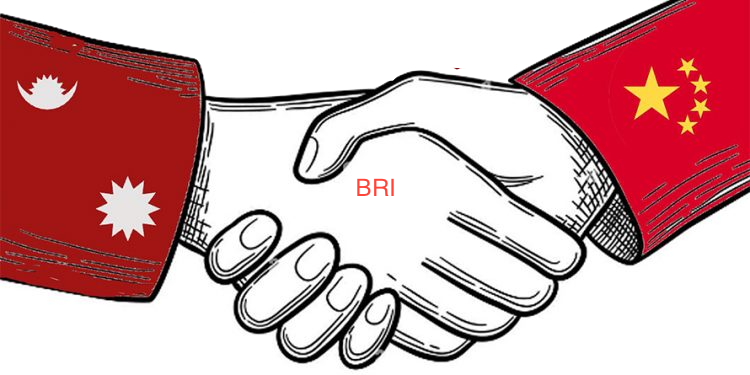Nepal joined China’s Belt and Road Initiative (BRI) in 2017 with high hopes of enhancing its infrastructure, connectivity, and economic growth. However, the country has been slow to implement or finalize significant projects under the initiative. This hesitation arises from a mix of economic, geopolitical, environmental, and strategic challenges. By analyzing these factors and drawing lessons from other countries involved in the BRI, we can better understand Nepal’s cautious approach.
Challenges for Nepal in Fully Accepting the BRI
Debt Trap Fears
Nepal is wary of over-relying on Chinese loans for large infrastructure projects, fearing debt dependency. The experiences of other BRI participants like Sri Lanka and the Maldives illustrate the risks:
Lession from Sri Lanka
Sri Lanka had to lease its Hambantota Port to China for 99 years after failing to repay BRI-related loans. This incident highlights the risk of losing sovereignty over strategic assets, a scenario Nepal wants to avoid.
Lession from Maldives
Maldives faces long-term financial instability due to significant debt incurred through BRI-funded projects, showing how over-borrowing can compromise national stability.
As a developing country with limited financial resources, Nepal is cautious about undertaking large-scale projects that might not generate sufficient returns, leaving the country burdened with unmanageable debt.
Lack of Transparency
BRI agreements often lack transparency regarding costs, loan terms, and repayment conditions. Nepalese policymakers are wary of entering into opaque deals that could disproportionately benefit China while leaving Nepal saddled with excessive liabilities. Transparency is crucial for public trust and to ensure projects align with Nepal’s long-term economic goals.
Geopolitical Sensitivities
Nepal’s geographic position between China and India puts it at the center of regional power dynamics. While China presents the BRI as a developmental opportunity, India views it as a geopolitical maneuver to expand Beijing’s influence.
India has openly opposed the BRI, especially the China-Pakistan Economic Corridor (CPEC), which it claims violates its sovereignty.
Nepal must carefully navigate its relationships with both neighbors to avoid alienating India, its largest trading partner and a country with deep cultural and historical ties.
Infrastructure and Environmental Challenges
Nepal’s mountainous terrain and fragile ecosystems present logistical and environmental hurdles. Building large-scale infrastructure, such as roads and railways, in this region is both costly and risky. Moreover, environmental degradation, including deforestation, landslides, and water resource depletion, is a significant concern. Policymakers are hesitant to prioritize development at the expense of ecological stability.
Domestic Political Instability
Frequent changes in Nepal’s government and internal disagreements over infrastructure priorities have stalled decision-making on BRI projects. Political instability complicates long-term commitments and creates uncertainties in negotiations with China.
Potential Risks for Nepal if It Fully Embraces the BRI
Debt Dependency
If Nepal borrows heavily from China to fund infrastructure projects, it risks becoming overly reliant on Chinese financing. This could limit the country’s fiscal independence, reduce its ability to invest in other critical sectors like healthcare and education, and hinder long-term economic sustainability.
Loss of Strategic Assets
Failure to repay loans could force Nepal to cede control of key infrastructure projects to China. The example of Sri Lanka’s Hambantota Port illustrates how unsustainable borrowing can result in loss of sovereignty.
Environmental Damage
Large infrastructure projects could exacerbate environmental challenges in Nepal’s already fragile Himalayan ecosystem. Deforestation, landslides, and depletion of water resources are potential consequences of poorly planned developments.
Geopolitical Isolation
Over-reliance on China could strain Nepal’s relationship with India, leading to potential trade disruptions or border tensions. India has previously imposed economic blockades on Nepal, as seen during the 2015 crisis, and may react similarly if Nepal’s alignment with China increases.
Erosion of Local Industries
Chinese-led infrastructure projects often rely on imported labor, materials, and machinery, leaving minimal opportunities for local businesses and workers. This could marginalize Nepalese industries and limit the domestic economic benefits of such initiatives.
China’s Strategy in Nepal
China views Nepal as a strategically significant partner for achieving its economic and geopolitical goals through the BRI. Key aspects of its strategy include:
Economic Integration
By developing connectivity projects like the trans-Himalayan railway, China aims to make Nepal a gateway to South Asia.
Improved infrastructure would enhance China’s export capabilities and reduce its dependence on traditional maritime trade routes like the Malacca Strait.
Counterbalancing India
Strengthening ties with Nepal allows China to challenge India’s dominance in South Asia. Increased Chinese influence in Nepal could disrupt India’s regional strategy.
Soft Power Diplomacy
China is investing in Nepal’s education, cultural, and tourism sectors to boost its soft power. Initiatives like Confucius Institutes and scholarships for Nepalese students are part of this approach.
Securing Tibetan Borders
Nepal shares a long border with Tibet, making it strategically important for China. Beijing relies on Nepal to suppress pro-Tibetan movements and ensure the stability of its borders.
Lessons for Nepal from Sri Lanka and the Maldives
Sri Lanka:
The Hambantota Port case demonstrates the risks of over-borrowing for large infrastructure projects with uncertain returns. Despite China’s promises of economic benefits, the port has failed to generate significant revenue, leaving Sri Lanka in a financial crisis.
Maldives:
The Maldives accumulated substantial debt under a pro-China administration. When leadership changed, the new government sought to renegotiate BRI agreements, highlighting the complications that arise when political shifts occur.
Nepal can avoid similar pitfalls by ensuring projects are financially viable, transparent, and aligned with its national interests.
Conclusion: A Balanced Approach for Nepal
While the BRI offers opportunities for infrastructure development, Nepal must approach it cautiously. By prioritizing transparency, diversifying partnerships, and negotiating fair terms, Nepal can safeguard its economic and strategic interests. Balancing relations with both India and China is essential for maintaining stability, fostering sustainable growth, and protecting Nepal’s sovereignty.





















